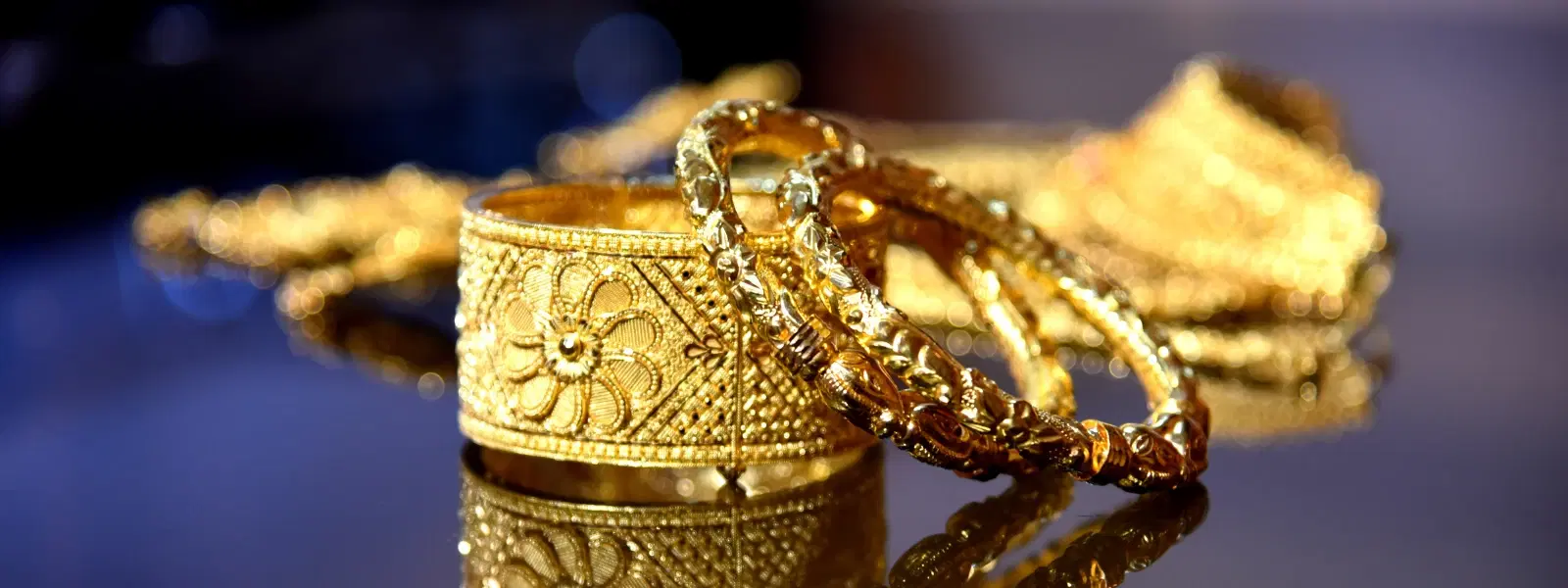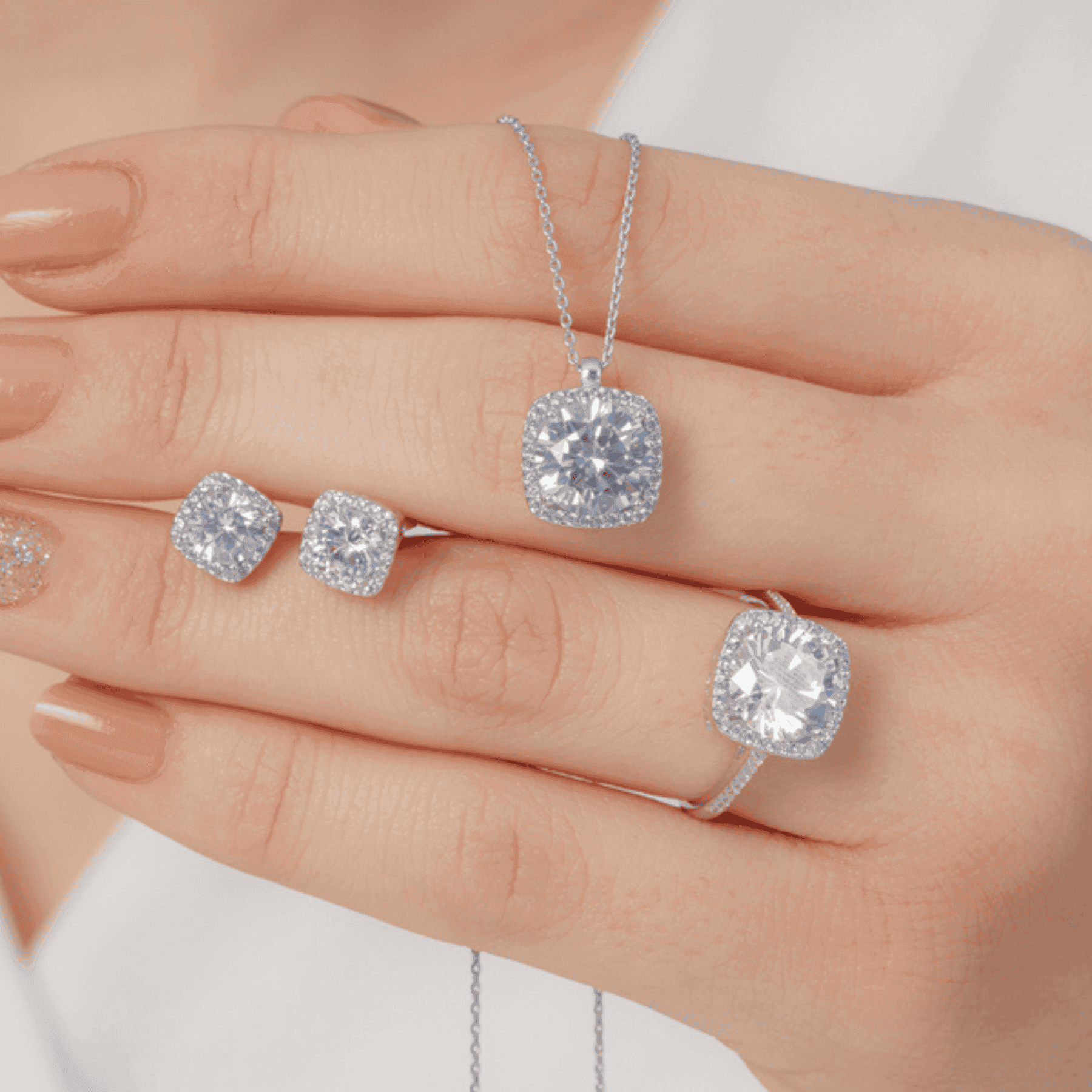
Watches & Jewellery
•04 min read

Choosing between platinum and white gold can seem like a complex puzzle when you are searching for the perfect piece of jewelry. This guide presents a detailed checklist that simplifies your decision-making process and deepens your understanding of the key differences between these elegant metals. By reading this post, you will learn about the basic characteristics, durability, maintenance, cost, and overall style appeal of each metal, empowering you to choose wisely and express your unique style with confidence.
Platinum is a naturally occurring precious metal revered for its rarity and hypoallergenic properties. Known for its density and enduring quality, platinum is typically used in its purest form, offering an upscale and luxurious feel. With its naturally white hue, platinum jewelry exudes timeless beauty and is ideal for those who prefer a classic touch in their accessories.
Dense and heavy, offering a premium feel.
Resistant to tarnishing and corrosion.
Hypoallergenic, making it perfect for delicate skin.
White gold is an alloy created by mixing gold with white metals such as nickel, palladium, or silver. It is frequently finished with rhodium plating to enhance its bright, reflective appearance. White gold offers a more lightweight option compared to platinum, making it appealing for intricate and modern designs that highlight style as a form of self-expression and identity.
Lightweight and versatile.
More affordable than platinum.
Requires periodic maintenance to restore its shine.
When weighing the robustness of these metals, durability is a central factor. Platinum is celebrated for its strength and enduring nature. It retains its weight and volume well over time, making it perfect for pieces like platinum rings and platinum for engagement rings. In contrast, white gold, while still durable, is naturally softer than platinum, leading to potential scratches and less resistance to daily wear. White gold durability can be compromised if the rhodium plating wears off, which might reveal the subtle yellow tone beneath.

Both metals require some care to retain their beauty. For platinum jewelry advantages, a simple cleaning with a mild soap solution and a soft cloth usually does the trick. Occasional professional polishing can rejuvenate its appearance without damaging its inherent charm. On the other hand, white gold maintenance tips include routine rhodium re-plating and careful handling to avoid exposure to harsh chemicals, ensuring that your white gold wedding bands and other pieces remain vibrant and reflective.
Price is often a deciding factor when making a final decision between these two metals. Platinum generally comes with a higher price tag due to its rarity, density, and purity. Its premium cost is further justified by its long-term investment value. Conversely, white gold is more budget-friendly and provides a cost-effective option for those seeking a stylish piece at a lower platinum vs gold price. However, bear in mind that the affordability of white gold might be offset by ongoing maintenance expenses such as rhodium plating.
The aesthetic differences between platinum and white gold are striking. Platinum has a naturally white, subtle sheen that develops an elegant patina over time, offering a vintage charm. This makes platinum an excellent choice for sophisticated designs and pieces that carry personal significance, such as platinum ring benefits or engagement rings. In comparison, white gold is known for its bright, mirrored finish thanks to its rhodium coating. This modern and polished appearance makes it especially popular for pairing with a variety of gemstones in curated jewelry collections.
Before finalizing your decision on platinum vs white gold, consider these essential points to ensure your purchase aligns with your lifestyle and personal style:
Budget: Determine how much you are willing to invest, keeping in mind potential long-term maintenance expenses.
Lifestyle: Reflect on your daily activities and whether you need a metal known for durability and resistance to daily wear.
Skin Sensitivity: For individuals with sensitive skin, platinum’s hypoallergenic properties make it the superior choice.
Design Preferences: Choose white gold if you appreciate intricate designs and a modern aesthetic, or opt for platinum if you prefer timeless elegance.
Long-Term Value: Consider whether you value the investment-quality of platinum or the affordability of white gold, keeping in mind their maintenance needs.
Expert Tip: Choosing the Right Metal for Your Lifestyle
Did you know that platinum’s hypoallergenic properties make it the ideal choice for individuals with sensitive skin, while white gold offers a more affordable option for those seeking versatility in design? Think about your daily wear habits and personal needs when choosing between these two metals.

Platinum is preferable for its durability and hypoallergenic nature, whereas white gold offers a more affordable and versatile option for intricate designs.
Platinum lasts longer due to its density and resistance to wear, while white gold may require periodic maintenance to keep it looking its best.
Yes, platinum’s long-term value, durability, and hypoallergenic benefits justify its higher price, particularly for those seeking quality and longevity.
White gold typically needs rhodium plating every 12 to 18 months to maintain its bright, white finish.
While platinum may develop a subtle patina over time, this natural look often adds to its charm, and professional polishing can help restore its original shine if desired.
Platinum and white gold each offer distinct features and benefits that cater to different preferences, budgets, and lifestyles. Platinum stands out for its durability, hypoallergenic benefits, and long-lasting quality, making it a favored option for those who view their jewelry as a long-term investment. In contrast, white gold delivers a versatile and cost-effective solution for those who desire a modern, brilliant finish. By carefully reviewing the checklist provided, you can confidently select the metal that best complements your personal style and enhances your jewelry collection. Embrace your unique style journey with smart choices that reflect both elegance and responsible fashion.